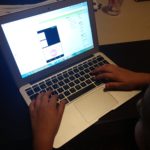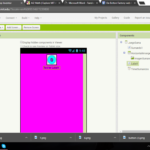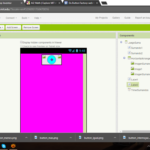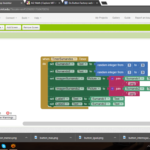Computación e Informática
Matejuego: Aplicación móvil para enseñar matemáticas a los niños
- Categoría: Pandilla Kids (3ro., 4to., 5to. y 6to. Año de primaria)
- Área de participación: Computación e Informática
- Asesor: BRENDA MAYANIN SALINAS RUIZ
- Autor: VANIA DESIREE BELTRAN LOPEZ ()
Resumen
Con el auge de las tecnologías de información y en específico de las aplicaciones móviles, en medio de una generación que tiene dispositivos móviles de manera mucho más accesible que otras, surge Matejuego. Se trata de una aplicación móvil para teléfonos celulares con sistema operativo Android cuyo objetivo es más lúdico, un juego con el cual también estemos aprendiendo, practicando y tomando gusto por las matemáticas, en específico por operaciones básicas (suma, resta, multiplicación y división). Espero que se diviertan tanto al jugarlo como yo al construirlo.
Pregunta de Investigación
¿Se puede enseñar matemáticas a los niños a través de una aplicación móvil?Planteamiento del Problema
A veces puede ser aburrido un método repetitivo para el aprendizaje de matemáticas básicas para niños de primaria. Quizá es una manera efectiva para algunos niños, pero habemos otros quienes que necesitamos métodos alternos de aprendizaje que nos despierten más interés.
En una época en la que los dispositivos móviles son tan cotidianos y su contacto con niños en edad de educación primaria es mayor para fines lúdicos, debe de explotarse esa facilidad y dirigirla a propósitos que ayuden en las bases de su formación académica.
Antecedentes
La enseñanza de las matemáticas no es una tarea simple, hay muchas incertidumbres que tienen que ver con la preparación matemática del profesor y con la preparación del estudiante, pero hay también razones que tienen que ver con la forma que las personas tenemos de aprender. Los problemas de aprendizaje matemático son mucho más comunes de lo que se piensa habitualmente.
Han surgido a lo largo de la historia varios métodos y estrategias para facilitar la enseñanza de matemáticas, uno de ellos es la estrategia de la Gamificación.
“Gamificar es aplicar estrategias (pensamientos y mecánicas) de juegos en contextos no jugables, ajenos a los juegos, con el fin de que las personas adopten ciertos comportamientos” Gamificación.
~Mecánicas de juegos en tu vida personal y profesional José Luis Ramírez
El término gamificar está un poco más allá de nuestro propósito de estudio, ya que nos enfocaremos específicamente en la aplicación de métodos mnemotécnicos a través de un videojuego.
No es la primera vez que alguien realiza este tipo de desarrollos informáticos con esos propósitos, tan solo la Escuela Superior de Cómputo del IPN ha presentado este tipo de alternativas para tratar condiciones específicas como la dislexia o dislalia a través de videojuegos.
Problemas de aprendizaje
Una enfermedad de la que se habla en los últimos años es la Discalculia, que se define como un trastorno estructural de “la maduración de las habilidades matemáticas referido sobre todo a niños y que se manifiesta como la comisión de errores variados en la comprensión de los números, habilidades de conteo, habilidades computacionales y solución de problemas verbales”.
Sentarse a hacer la tarea de matemáticas puede ser frustrante para los chicos que tienen dificultades en matemáticas o discalculia. Sin embargo, las hojas de ejercicios y las tarjetas no son la única manera de practicar matemáticas. Los juegos pueden ser una manera divertida de enseñar habilidades matemáticas.
Los mejores juegos matemáticos se enfocan en habilidades matemáticas específicas y tienen el nivel de complejidad apropiado. Un buen ejemplo es el popular juego de cartas UNO, el cual es sencillo de aprender, pero no siempre fácil de ganar. Uno ayuda a los chicos a que aprendan a contar y a identificar números.
Estos métodos de gamificación para la motivación de estudiantes no sólo en las matemáticas han generado tan buenos resultados que van surgiendo escuelas públicas y privadas empleando estos métodos como Quest To Learn o The Institute of Play.
Objetivo
Desarrollar una aplicación móvil que permita el aprendizaje y refuerzo de matemáticas para niños de nivel primaria.
Justificación
Me agradan mucho los juegos y aplicaciones para teléfonos móviles, y se me dificulta un poco el estudio de matemáticas. Hacerlo en forma de juego me facilita el aprendizaje y me motiva.
Noto que hay muchos niños que comparten mi opinión y disfrutarían de algo así.
Por ello me interesa la realización de esta aplicación, para satisfacer una necesidad propia y contribuir con algo que pueda ayudar a otros como yo.
Hipótesis
Enseñando las matemáticas a niños de primaria a manera de juego, será más fácil aprenderlas para ellos.
Si se desarrolla una aplicación móvil que permita el aprendizaje de las matemáticas, entonces se podrá utilizar esta aplicación para reforzar el estudio de éstas de manera divertida.
Método (materiales y procedimiento)
MATERIALES
El proyecto consta de dos fases, la de diseño y construcción y la de experimentación.
En la fase de diseño y construcción utilizamos sólo una computadora con conexión a internet y un teléfono celular con sistema operativo Android conectado a la misma red local. En mi caso utilicé una Macbook Air 2015 y un Motorola G4 Play con Android versión 5.1.12 Lollipop.
Para la fase de experimentación sólo necesitamos un teléfono Android y uno o más voluntarios en edad de cursar primaria, de preferencia de primero, segundo o tercer grado.
PROCEDIMIENTO
Diseño y Construcción
Me referiré a la fase de diseño y construcción como todo aquello que implique el desarrollo de la aplicación. Como no tenía conocimientos de programación me recomendaron una plataforma con el que se pueden programar de forma muy sencilla, se llama App Inventor.
App Inventor fue desarrollada por el MIT (Massachussets Institute of Technology), escuela líder en el ámbito científico y tecnológico. Esta plataforma permite colocar sentencias lógicas a partir de bloques que van embonando como si fueran piezas de rompecabezas, estas piezas contienen funciones ya desarrolladas que permiten la construcción de una aplicación sin escribir una sola línea de código y sin grandes conocimientos en programación.
- Ingresamos a la página http://appinventor.mit.edu
y hacemos clic en el botón “Create Apps!”
2. Se nos abrirá otra página donde nos pedirá ingresar con nuestra cuenta de correo:
Nos registramos con nuestra cuenta de Google (yo usé mi cuenta personal pero también pude usar la de la escuela)
3. Una vez registrados entramos al sistema que se ve más o menos así:
Hacemos clic en el botón señalado para cerrar el cuadro de diálogo y si queremos que no vuelva a salir marcamos la casilla que está a lado que dice “Do not show again”
4. Lo más cómodo es cambiar el idioma. Esta opción se encuentra en la parte superior derecha donde dice English, ahora marcamos la de “Español”
- La plataforma es intuitiva y el código no será objeto de esta investigación puesto que no es el propósito principal y también seguirá en constante desarrollo.
Para quien esté interesado puede consultar las siguientes páginas:
http://appinventor.mit.edu/explore/get-started.html
http://appinventor.mit.edu/explore/ai2/tutorials.html
http://appinventor.mit.edu/explore/library.html
- Para poder probar en un celular tenemos que estar conectados con éste a la misma red inalámbrica que la computadora donde estamos haciendo la aplicación.
Descargamos la aplicación AI Companion de la Play Store de Google (esta aplicación sólo estará disponible para Android), nos servirá para conectarnos a la plataforma de desarrollo.
https://play.google.com/store/apps/details?id=edu.mit.appinventor.aicompanion3
- Hacemos clic en el menú Conectar – AI Companion
Abrimos la aplicación en nuestro teléfono e ingresamos el código que nos aparece en la computadora
Experimentación
Como no hay manera de “medir la diversión”, me limité a prestarle y presentar la aplicación Matejuego a algunos niños de prueba preguntando si les gustaría aprender matemáticas con juegos así.
Como se esperaba, todos me contestaron que sí, así que opté por otro tipo de prueba: un examen antes y después de usar un par de horas la aplicación.
Resultados
Los sujetos de estudio usaron más la aplicación por el sentido de juego, además de que me comentaron que no lo veían como un “estudio” o una “tarea”.
Y como se dice que no hay mejor manera de aprender matemáticas que haciendo muchos ejercicios, me di cuenta de que la mejor manera de hacerlo con la aplicación es usarla mucho.
Estoy trabajando en actualizaciones de Matejuego para que pueda ser más agradable a la vista y pueda incluir otro tipo de juegos o mezcla de operaciones.
Galería Resultados
Discusión
Conclusiones
Puedo decir sin dudar que la mejor parte de este proyecto fue el desarrollo de la aplicación más que la prueba de ésta con otros niños o incluso que jugarla yo misma. Crear una cosa por ti a partir de prácticamente nada me dio una gran satisfacción, seguiré mejorando Matejuego y tal vez se le puedan añadir ejercicios muy específicos para ayudar a otros niños.
Bibliografía
https://www.bloghoptoys.es/el-impacto-positivo-de-los-videojuegos-en-los-ninos-con-dislexia/
Consultado en diciembre de 2017
Andrew M. Lee
Consultado en diciembre de 2017
Universidad Autónoma de Valencia
https://www.universidadviu.es/nuevas-estrategias-para-abordar-la-discalculia/
Publicado el 10 de diciembre de 2014
Consultado en diciembre de 2017
Universidad de Castilla – La Mancha
Publicado y consultado en enero de 2018
Ramírez, José Luis
GAMIFICACIÓN. Mecánicas de juegos en tu vida personal y profesional.
Alfaomega
Castanedo, C.
Bases psicopedagógicas de la educación especial.
CCS. Madrid.
http://appinventor.mit.edu/explore/get-started.html
http://appinventor.mit.edu/explore/ai2/tutorials.html
http://appinventor.mit.edu/explore/library.htm
Matejuego: Aplicación móvil para enseñar matemáticas a los niños
Summary
Research Question
Can children be taught mathematics through a mobile application?Problem approach
Sometimes a repetitive method for learning basic mathematics for elementary school children can be boring. Perhaps it is an effective way for some children, but there are others who need alternative methods of learning that arouse more interest.
At a time when mobile devices are so everyday and their contact with children of primary school age is greater for recreational purposes, that facility should be exploited and directed towards purposes that help in the bases of their academic training.
Background
The teaching of mathematics is not a simple task, there are many uncertainties that have to do with the mathematical preparation of the teacher and the preparation of the student, but there are also reasons that have to do with the way that people have to learn. Mathematical learning problems are much more common than commonly thought.
Several methods and strategies have emerged throughout history to facilitate the teaching of mathematics, one of which is the strategy of Gamification.
“Gamify is to apply strategies (thoughts and mechanics) of games in non-playable contexts, alien to games, in order for people to adopt certain behaviors” Gamification.
~ Game mechanics in your personal and professional life José Luis Ramírez
The term gamification is a little beyond our purpose of study, since we will focus specifically on the application of mnemonic methods through a videogame.
It is not the first time that someone makes these types of computer developments for these purposes, only the Higher School of Computing of the IPN has presented this type of alternatives to address specific conditions such as dyslexia or dislalia through video games.
Learning problems
A disease that has been discussed in recent years is dyscalculia, which is defined as a structural disorder of “the maturation of mathematical skills referred above all to children and manifested as the commission of varied errors in the understanding of numbers, counting skills, computational skills, and verbal problem solving. ”
Sitting down to do math homework can be frustrating for kids who have difficulty in math or dyscalculia. However, exercise sheets and cards are not the only way to practice math. Games can be a fun way to teach math skills.
The best mathematical games focus on specific mathematical skills and have the appropriate level of complexity. A good example is the popular UNO card game, which is easy to learn, but not always easy to win. One helps children learn to count and identify numbers.
These gamification methods for student motivation not only in mathematics have generated such good results that public and private schools are emerging using these methods as Quest To Learn or The Institute of Play.
Objective
To develop a mobile application that allows learning and math reinforcement of math for children at elementary school level.
Justification
I like games and applications for mobile phones very much, and I find it difficult to study mathematics a bit. Doing it in the form of a game makes learning easier and motivates me.
I notice that there are many children who share my opinion and would enjoy something like that.
That is why I am interested in the realization of this application, to satisfy a need of my own and contribute with something that can help others like me.
Hypothesis
By teaching mathematics to elementary school children as a game, it will be easier to learn them for them.
If a mobile application is developed that allows the learning of mathematics, then this application can be used to reinforce the study them in a funny way.
Method (materials and procedure)
MATERIALS
The project consists of two phases, design and construction and experimentation.
In the design and construction phase, we use only one computer with an internet connection and a cell phone with an Android operating system connected to the same local network. In my case I used a Macbook Air 2015 and a Motorola G4 Play with Android version 5.1.12 Lollipop.
For the experimentation phase we only need an Android phone and one or more volunteers of primary school age, preferably first, second or third grade.
PROCESS
Design and Construction
I will refer to the design and construction phase as everything that implies the development of the application. As I did not have any programming knowledge, they recommended a platform with which you can program very simply, called App Inventor.
Inventor App was developed by the MIT (Massachusetts Institute of Technology), leading school in the scientific and technological field. This platform allows you to place logical statements from blocks that go like jigsaw pieces, these pieces contain already developed functions that allow the construction of an application without writing a single line of code and without great knowledge in programming.
We entered the page http://appinventor.mit.edu
and we click on the “Create Apps!” button
2. We will open another page where you will ask us to enter with our email account:
We registered with our Google account (I used my personal account but I could also use the school one)
3. Once registered we enter the system that looks more or less like this:
We click on the button marked to close the dialog box and if we do not want it to come out again we mark the box next to it that says “Do not show again”
4. The most comfortable thing is to change the language. This option is in the top right where it says English, now we mark the “Spanish”
The platform is intuitive and the code will not be subject to this investigation since it is not the main purpose and will also continue in constant development.
For those interested, you can consult the following pages:
http://appinventor.mit.edu/explore/get-started.html
http://appinventor.mit.edu/explore/ai2/tutorials.html
http://appinventor.mit.edu/explore/library.html
To be able to test on a cell phone we have to be connected with it to the same wireless network as the computer where we are doing the application.
We downloaded the AI Companion application from the Google Play Store (this application will only be available for Android), it will allow us to connect to the development platform.
https://play.google.com/store/apps/details?id=edu.mit.appinventor.aicompanion3
We click on the menu Connect – AI Companion
We open the application on our phone and enter the code that appears on the computer
Experimentation
As there is no way to “measure the fun”, I just lent and presented the game Matejuego to some test children asking if they would like to learn math with games like that.
As expected, everyone answered yes, so I opted for another type of test: an exam before and after using the application for a couple of hours.
Method Gallery
Results
The study subjects used the application more for the sense of play, in addition to being told that they did not see it as a “study” or a “task”.
And as it is said that there is no better way to learn math than doing many exercises, I realized that the best way to do it with the application is to use it a lot.
I am working on Matejuego updates so that it can be more pleasing to the eye and can include other types of games or mix of operations.
Results Gallery
Discussion
Conclusions
I can say without hesitation that the best part of this project was the development of the application rather than testing it with other children or even playing it myself. Creating a thing for you from practically nothing gave me great satisfaction, I will continue to improve Matejuego and maybe you can add very specific exercises to help other children.
Bibliography
El impacto positivo de los videojuegos en los niños con dislexia
Retrieved in December 2017
Andrew M. Lee
https://www.understood.org/es-mx/school-learning/learning-at-home/games-skillbuilders/how-games-can-help-kids-who-struggle-with-math
Retrieved in December 2017
Autonomous University of Valencia
https://www.universidadviu.es/nuevas-estrategias-para-abordar-la-discalculia/
Published on December 10, 2014
Retrieved in December 2017
Castilla-La Mancha university
Videojuegos y apps como herramienta en la intervención de dislexia y discalculia
Published and consulted in January 2018
Ramírez, José Luis
GAMIFICATION Game mechanics in your personal and professional life.
Alpha Omega
Castanedo, C.
Psychopedagogical bases of special education.
CCS. Madrid.
http://appinventor.mit.edu/explore/get-started.html
http://appinventor.mit.edu/explore/ai2/tutorials.html
http://appinventor.mit.edu/explore/library.htm








